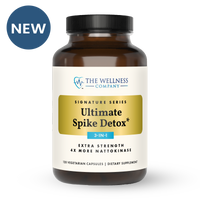How to Double Your Breath Hold with One Simple Technique

Show me how someone breathes, and I’ll tell you how they feel. Is it relaxed and rhythmic? This reflects ease and comfort. Is it shallow and rapid? This reflects panic or strain. The breath is not only an indicator of our state; it’s also a tool we can leverage to transform it. For Millennia, people have employed breathwork practices to achieve physical, psychological, and spiritual goals. Athletes and musicians use it to enhance performance. Meditators use it to gain spiritual insight and seek enlightenment. Regardless of your aim, your breath – which is with you from your first moment to your last – is fertile ground for exploration.
The Wim Hof Method
My first introduction to breathwork was through an eccentric Dutchman named Wim “the Iceman” Hof. A friend suggested I try his method, claiming it allowed him to hold his breath for three minutes. I was skeptical, but it’s hard to argue with the Iceman’s accomplishments. He has held multiple world records for cold exposure and climbed most of Mount Everest in shorts. Hof touts his breathing method as the key to his thermal resilience.
I sat down and gave his method a try, starting by inhaling forcefully, then exhaling gently, for two minutes. I then held my breath and set a timer. As 30 seconds passed, I expected the urge to breathe, but it didn’t come. Strange. 60 seconds came and went. Nothing. 90 seconds. Still nothing. I finally gasped for air at around two minutes, stunned. Five minutes earlier, I’d only been able to hold my breath for one minute! Using this bizarre technique, I’d doubled my time. I’m not unique in this respect; Hof has thousands of devoted followers with similar accounts.
Respiratory Euphoria
My increased breath hold wasn’t the only interesting takeaway. During the practice my feet and fingers became tingly, thoughts lost their sharpness, and a sense of euphoria emerged. I felt like I was floating. It was a total body refresh, a healthy shock to the system – similar to the feeling after an ice-cold shower, or a hard workout.
Physiological Underpinnings
To understand how this method works, it’s necessary to understand some basic physiology. Our main trigger to breathe is not low levels of oxygen. It’s high levels of carbon dioxide. Hof’s method causes the concentration of carbon dioxide in the blood to plummet, making the blood more alkaline and short-circuiting our trigger to breathe.
Research has shown the practice to do many remarkable things, such as blunt the inflammatory response to injection of a toxin in a lab setting, activate brain areas associated with pain suppression, and reduce disease activity in people with a rare form of arthritis. But it’s not a panacea, and it’s not appropriate for everyone. Before trying any vigorous breathing techniques, get cleared by a medical professional. And don’t, under any circumstances, do this practice while in water, or driving a car.
Bottom Line
The breath is a gift we ought to treasure, nurture and explore. There are many possible health benefits to using breathwork practices, and The Wim Hof Method is a wonderful place to start.
Video: Wim Hof guides viewers through his famous Wim Hof Method:
References
[1] Guyenet, P. G., & Bayliss, D. A. (2015). Neural control of breathing and CO2 homeostasis. Neuron, 87(5), 946-961.
[2] Kox, M., van Eijk, L. T., Zwaag, J., van den Wildenberg, J., Sweep, F. C., van der Hoeven, J. G., & Pickkers, P. (2014). Voluntary activation of the sympathetic nervous system and attenuation of the innate immune response in humans. Proceedings of the National Academy of Sciences, 111(20), 7379-7384.
[3] Muzik, O., Reilly, K. T., & Diwadkar, V. A. (2018). “Brain over body”–A study on the willful regulation of autonomic function during cold exposure. NeuroImage, 172, 632-641.
[4] Buijze, G. A., De Jong, H. M. Y., Kox, M., van de Sande, M. G., Van Schaardenburg, D., Van Vugt, R. M., ... & Baeten, D. L. P. (2019). An add-on training program involving breathing exercises, cold exposure, and meditation attenuates inflammation and disease activity in axial spondyloarthritis–A proof of concept trial. PloS one, 14(12), e0225749.














